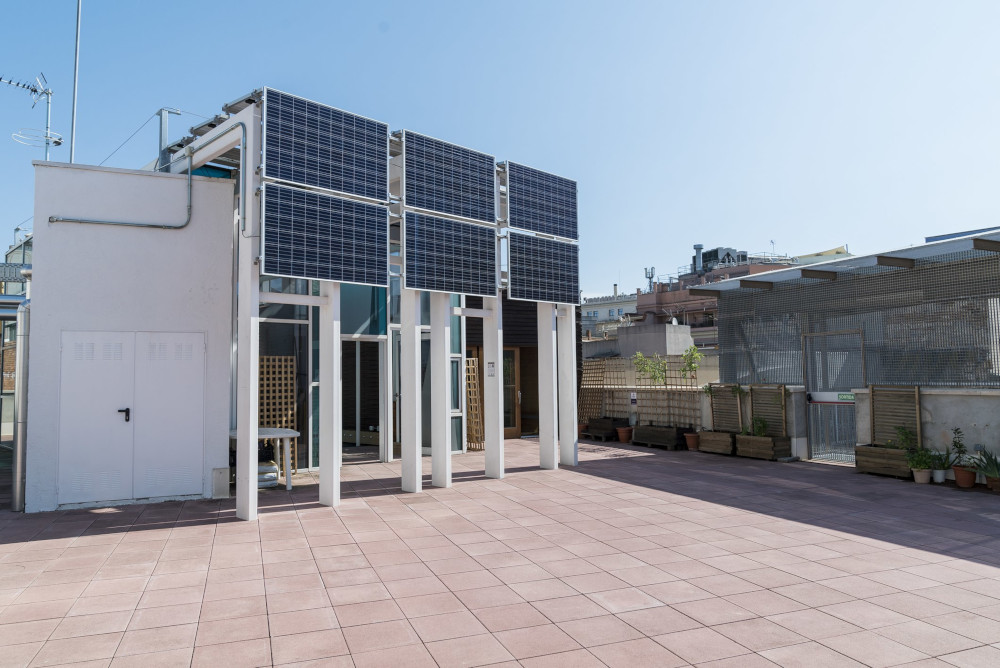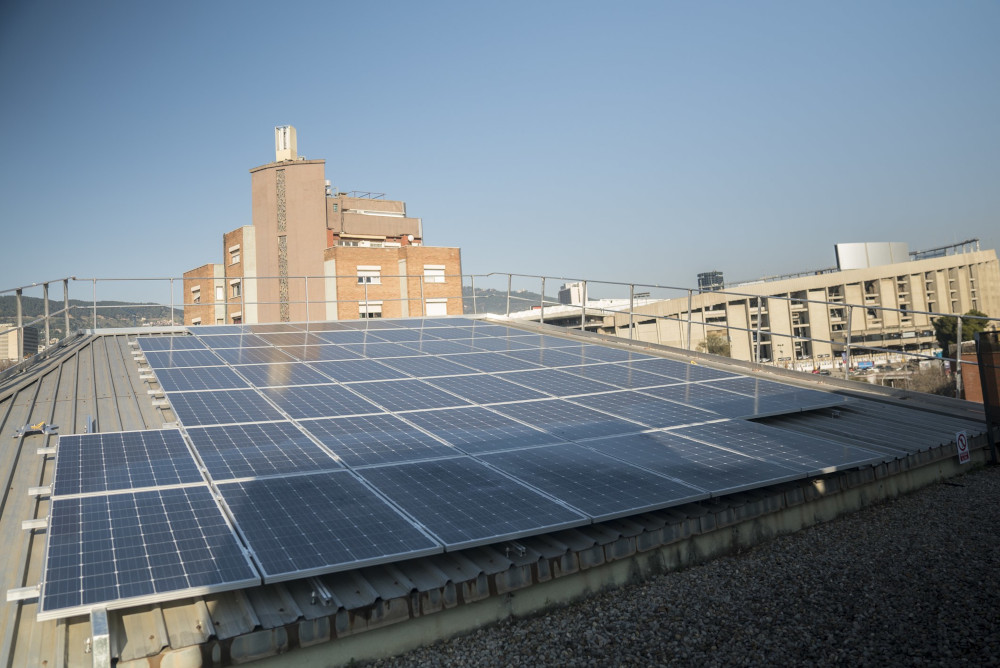Professional Area
Barcelona was a pioneering city in implementing measures to promote the installation of solar-energy systems; so, 1999 saw the approval of the Barcelona Solar Thermal Ordinance, compliance with which became mandatory as from August 2000.
The balance from all these years enabled the city to process over 100,000 m2 of surface area for capturing solar radiation and which can generate an annual power of 71,000 MWh. Nearly 60% of this surface area is found in housing blocks.
Barcelona Solar Ordinance
Under the terms of Title 8, on Solar Energy, of the Barcelona Environment Ordinance, published in the BOPB on 2 May 2011, it is compulsory to plan systems for harnessing solar energy to produce domestic hot water and electricity in new or renovated buildings or buildings whose uses have undergone comprehensive changes.
Sector professionals who wish to process an installation project must provide evidence of compliance with Title 8 of Barcelona’s Environment Ordinance. Specifically, they must present documents on two occasions during their processing of the construction work project:
- First, when applying for a major construction-work permit, where they must present a thermal solar or photovoltaic energy project or exemption report..
- With the end-of-work notification, they must also present the end-of-work certificates for the solar-thermal or alternative installation and for the photovoltaic installation.
Application documents for the construction permit are presented as an appendix to the construction project, entitled ‘Solar Energy Supplement’, with the content indicated in the works guide, which is the result of a prior consultation.

Protocol d’energia i instrucció de generació
Energy Protocol and generation instructions
The Energy Protocol for Municipal Projects and Construction Works and Equipment (henceforth, Energy Protocol) is a document drawn up by the AEB in partnership with the main bodies linked to the City Council and various energy engineers. This protocol develops the content of the Technical instructions for the application of environmental criteria in works projects in the field of energy and the content of the Instructions for the incorporation of the objective of renewable energy generation in the municipal actions related to the drafting of works projects and urban planning instruments o that municipal public building projects reach the level of energy benefits necessary and sufficient to be tendered, executed and received by building managers.
The Energy Protocol is applicable to all bodies linked to Barcelona City Council and other public bodies participating on a voluntary basis and gathers the necessary information to prepare the documentation required by the AEB for energy efficiency, renewable energy generation and energy monitoring, for different project and works stages.

Generation instructions

From 30 January 2020, the City Council has had a set of instructions that provide the legal basis for the incorporation of generation for all municipal projects and to help meet the city’s objectives by which generation is increased.
Previously, the City Council had a set of instructions for sustainability for construction projects in which the need to incorporate generation was already indicated. With the new set of generation instructions, however, the obligation is expressly stated, and the objectives are more ambitious.
Solar integration in Barcelona
Integrating solar energy into architecture and the landscape
The transition towards a more sustainable and self-sufficient energy model is based on power generation using renewable energies. Solar energy is almost certainly the alternative energy source with the most potential: It is the most readily available, the most socially acceptable, and the most technically and economically viable.
The implementation of solar collectors in the city environment represents one of the biggest challenges for achieving a high-quality urban landscape. In this regard, surfaces used to collect solar power must be compatible with the various elements used in solar power installations.
The city’s urban layout determines to what extent the integration of solar collectors is possible. Factors such as street layout, type of urban materials and visual exposure of the city play a determining role. Therefore, there are multiple integration strategies for solar energy collectors which are often based on giving them additional functions in the building enclosure.

Criteria for the installation of surfaces used for solar collection
The following is a selection of basic operational criteria to aid project managers apply the best professional practices to integrate solar energy into buildings.
Assess the viability of incorporating solar energy in new and fully renovated buildings
Prioritise selecting multifunctional and stackable solar collectors
Respect existing buildings when incorporating solar energy
Consider the characteristics of the surrounding buildings
Keep within the boundaries of and respect the host building’s profile
Group together all the solar collectors on one surface
Select solar panels with a rectangular shape
Evaluate the alternative versions and models of the selected products
Maintain an equal distance between the solar collectors on the surfaces and the lines of the host building
On flat roofs, install the solar collectors away from the edges and at a low height
Combine thermal and photovoltaic collectors in the same installation
Ensure colours blend in
Measure and coordinate the joints between the panels and the plates
Minimise the visibility of the structure and the support installation
Take care of all the details
Connection procedure for self-consumption installations
Barcelona has presented the Promotion programme for solar energy which aims to promote and boost the number of self-consumption energy generating installations by making use of the surfaces of municipal and privately-owned buildings using public and private investment.
Despite the negative regard associated with self-consumption and the commonly held perception that it is difficult to legalise installations, the City Council aims to demonstrate the technical and economic viability of solar installations for self-consumption. It will do this by facilitating the bureaucratic process so that companies and city residents are firmly committed to using solar energy.
Therefore, the City Council has designed a Process Guide that sets out the steps to follow and provides information on who to contact in the event that you would like to have an installation.
Although this guide is mainly aimed at the sector’s professionals, it also contains information geared towards city residents, providing answers to queries from residents on self-consumption.
Guide for Professionals
- Basic Guide to Energy Efficiency in Municipal Buildings
- Guide for the Implementation of Photovoltaic Installations in Public Constructions
- Comprehensive Maintenance Guide for Residential Buildings
- Analysis of energy rating scenarios for buildings in Barcelona: Study in new residential buildings
- Analysis of energy rating scenarios for buildings in Barcelona; Study in new buildings for tertiary use


